
CoinGape has covered the cryptocurrency industry since 2017, aiming to provide informative insights to our readers. Our journalists and analysts bring years of experience in market analysis and blockchain technology to ensure factual accuracy and balanced reporting. You can read more about our review methodology to get more information on the ratings below. In order to provide our readers with accurate and unfiltered information, we work hard to uphold the highest standards for our editorial policy.
Investment disclaimer: The content reflects the author’s personal views and current market conditions. Please conduct your own research before investing in cryptocurrencies, as neither the author nor the publication is responsible for any financial losses.
Ad Disclosure: This site may feature sponsored content and affiliate links, To get more information on the partner link placements visit our affiliate policy page . All advertisements are clearly labeled, and ad partners have no influence over our editorial content.
The top RWA Crypto projects are rapidly transforming the crypto scene. By connecting tangible assets like real estate, commodities, and fine arts to the blockchain, Real World Assets (RWAs) are unlocking new avenues for crypto investors.
In this article, explore the best RWA crypto projects that are leading the crypto revolution.
The Real World Assets (RWA) world has overcome the myth of not being the profit-turning machine in the crypto domain. As of 27th December 2025, top Real World Assets (RWA) coins are moving in the right direction with a mind-blowing market cap of $38,461,681,027, which is only up by 8.64%. If we look at the 24-hour volume, $2,028,766,546, it has shown some dramatic movement. However, don’t forget to check the top gainers and top losers in this section.
$38,461,681,027 8.64%
$2,028,766,546 -7.87%
Top gainers

APF coin
$0.092492
65.8%
Parcl
$0.08304
33.36%
Collaterize
$0.02089195
22.09%Top losers

Tharwa
$0.0043149
-27.27%
Allo
$0.00464972
-14.25%
Maple
$5.49
-7.33% Feature your project
Feature your project
| Name | Price | 24HR Change | Market Cap | Total Volume | Circulating Supply | |
|---|---|---|---|---|---|---|
 1. Figure Heloc |
$1.02600000 | -1.26% | $14.73B | $5,752,163 | 14.36B | |
 2. Chainlink |
$12.2100 | 0.28% | $8.64B | $323,276,923 | 708.10M | |
 3. Stellar |
$0.21276200 | 1.36% | $6.88B | $88,189,962 | 32.39B | |
 4. Tether Gold |
$4,543.5100 | 1.03% | $2.36B | $333,397,152 | 520.09K | |
 5. BlackRock USD Institutional Digital Liquidity Fund |
$1.00000000 | 0.00% | $1.73B | $0 | 1.73B | |
 6. PAX Gold |
$4,545.2100 | 0.66% | $1.64B | $229,033,561 | 359.74K | |
|
7. Provenance Blockchain |
$0.03048720 | -7.09% | $1.61B | $45,534 | 52.74B | |
 8. Circle USYC |
$1.11000000 | 0.00% | $1.54B | $222,035 | 1.39B | |
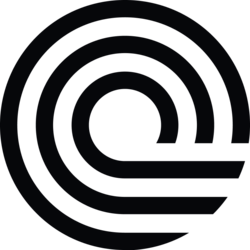 9. Ondo |
$0.37597000 | 1.66% | $1.19B | $39,249,198 | 3.16B | |
 10. Quant |
$72.0500 | -1.20% | $1.05B | $11,607,621 | 14.54M | |
 11. Algorand |
$0.11819900 | 2.00% | $1.04B | $38,261,773 | 8.84B | |
 12. Janus Henderson Anemoy AAA CLO Fund |
$1.01900000 | 0.00% | $1.02B | $0 | 1.00B | |
|
13. XDC Network |
$0.05027900 | 5.23% | $931.83M | $28,941,516 | 18.53B | |
 14. OUSG |
$113.7700 | 0.02% | $827.99M | $0 | 7.28M | |
 15. Superstate Short Duration U.S. Government Securities Fund (USTB) |
$10.9400 | 0.01% | $805.53M | $0 | 73.65M | |
 16. Spiko EU T-Bills Money Market Fund |
$1.23000000 | -0.12% | $543.23M | $0 | 441.76M | |
 17. Injective |
$4.6400 | 3.05% | $463.06M | $36,861,441 | 100.00M | |
 18. Maple Finance |
$0.34027800 | 0.49% | $390.40M | $20,327,347 | 1.15B | |
 19. Kinesis Gold |
$147.0000 | 1.48% | $350.76M | $461,188 | 2.39M | |
 20. Kinesis Silver |
$79.8200 | 6.93% | $297.10M | $2,340,793 | 3.72M | |
 21. Fidelity Digital Interest Token |
$1.00000000 | 0.00% | $264.07M | $0 | 264.07M | |
 22. Janus Henderson Anemoy Treasury Fund |
$1.09000000 | 0.02% | $263.34M | $0 | 241.68M | |
 23. Zebec Network |
$0.00263914 | -2.61% | $255.84M | $9,871,699 | 96.91B | |
 24. YLDS |
$1.00000000 | 0.00% | $219.29M | $5 | 219.25M | |
 25. Tradable NA Rent Financing Platform SSTN |
$1.00000000 | 0.00% | $189.50M | $0 | 189.50M | |
 26. OriginTrail |
$0.39712100 | -0.52% | $177.61M | $2,349,756 | 447.27M | |
 27. Theo Short Duration US Treasury Fund |
$1.01200000 | -0.05% | $162.66M | $671,024 | 160.59M | |
 28. Spiko US T-Bills Money Market Fund |
$1.06900000 | 0.00% | $155.38M | $50 | 145.34M | |
 29. Reserve Rights |
$0.00240451 | 0.77% | $149.15M | $8,587,375 | 62.11B | |
 30. STASIS EURO |
$1.16000000 | -0.63% | $144.55M | $64,944 | 124.13M | |
 31. Apollo Diversified Credit Securitize Fund |
$1,083.8000 | 0.09% | $132.07M | $0 | 121.86K | |
 32. Creditcoin |
$0.24834900 | 0.61% | $126.14M | $6,491,746 | 510.51M | |
 33. Velo |
$0.00686059 | 0.47% | $120.40M | $112,665,379 | 17.56B | |
 34. Ravencoin |
$0.00678850 | 1.75% | $108.32M | $4,679,836 | 15.95B | |
 35. Tradable Singapore Fintech SSL |
$1.00000000 | 0.00% | $100.85M | $0 | 100.85M | |
 36. Keeta |
$0.21687100 | -2.59% | $100.18M | $3,311,910 | 462.00M | |
 37. Pleasing Gold |
$4,541.9900 | 0.76% | $88.48M | $75 | 19.51K | |
 38. MANTRA |
$0.07423200 | 0.41% | $85.23M | $16,864,169 | 1.15B | |
 39. VanEck Treasury Fund |
$1.00000000 | 0.00% | $80.64M | $0 | 80.64M | |
 40. OpenEden OpenDollar |
$0.99902300 | 0.06% | $76.77M | $657 | 76.85M | |
 41. Matrixdock Gold |
$4,559.4000 | 0.68% | $70.36M | $162,608 | 15.43K | |
 42. RedStone |
$0.22691100 | 1.99% | $68.22M | $6,243,244 | 301.07M | |
 43. Onchain Yield Coin |
$1.06100000 | 0.03% | $65.41M | $622,910 | 61.62M | |
 44. Centrifuge |
$0.11296200 | -0.99% | $64.82M | $500,005 | 573.83M | |
 45. Compounding OpenDollar |
$1.03700000 | 0.00% | $64.33M | $658,342 | 62.08M | |
|
46. Casper Network |
$0.00451481 | -0.66% | $61.88M | $3,095,196 | 13.71B | |
 47. Polymesh |
$0.04917395 | -2.50% | $60.52M | $4,650,527 | 1.23B | |
 48. stUSDT Staked USDT |
$0.99137400 | -0.59% | $59.90M | $0 | 60.42M | |
 49. Plume |
$0.01863487 | -2.49% | $58.54M | $29,863,352 | 3.14B | |
 50. LCX |
$0.06015900 | 0.27% | $56.61M | $257,795 | 940.99M | |
 51. Tesla xStock |
$474.9100 | -2.10% | $51.59M | $15,188,308 | 108.65K | |
 52. WorldAssets |
$0.55965100 | -3.69% | $49.70M | $431,100 | 90.00M | |
 53. Sygnum FIUSD Liquidity Fund |
$11,714.2500 | 0.00% | $46.83M | $0 | 4.00K | |
|
54. Tether Gold Tokens |
$4,536.8700 | 0.63% | $44.46M | $2,784,742 | 9.82K | |
 55. Energy Web |
$0.71345100 | -0.82% | $43.20M | $201,075 | 60.54M | |
 56. Midas mTBILL |
$1.04700000 | 0.04% | $41.77M | $194,942 | 39.89M | |
 57. Ondo U.S. Dollar Token |
$1.00000000 | 0.00% | $40.95M | $83,143,530 | 40.95M | |
 58. Usual |
$0.02567076 | 3.28% | $40.05M | $6,752,574 | 1.56B | |
 59. Noble Dollar (USDN) |
$0.99971900 | 0.00% | $39.38M | $4,516 | 39.39M | |
|
60. DOVU |
$0.00370660 | 8.49% | $37.07M | $226,682 | 10.00B | |
 61. Chromia |
$0.03982049 | 1.10% | $33.83M | $2,136,142 | 850.63M | |
 62. DIA |
$0.27617800 | 1.25% | $33.06M | $1,060,616 | 119.68M | |
 63. USTBL |
$1.04100000 | 0.08% | $31.85M | $14,985 | 30.60M | |
 64. Clearpool |
$0.03671392 | -12.55% | $30.44M | $90,881,299 | 846.45M | |
 65. Chintai |
$0.02929869 | 7.86% | $29.28M | $437,470 | 998.92M | |
 66. SPDR S&P 500 ETF (Ondo Tokenized ETF) |
$692.4900 | 0.07% | $26.96M | $2,725,991 | 38.94K | |
|
67. StrikeX |
$0.03070499 | 1.40% | $26.02M | $14,013 | 847.98M | |
 68. IXS |
$0.13056500 | -1.47% | $23.50M | $129,170 | 180.00M | |
 69. Frax Staked frxUSD |
$1.17000000 | 0.03% | $23.43M | $1,523,088 | 19.95M | |
 70. DUSK |
$0.04507429 | 5.61% | $22.52M | $4,004,180 | 500.00M | |
 71. iShares Silver Trust (Ondo Tokenized Stock) |
$71.6600 | 5.99% | $22.34M | $32,587,007 | 306.76K | |
 72. iShares Core S&P 500 ETF (Ondo Tokenized ETF) |
$695.7000 | -0.04% | $21.66M | $17,259 | 31.13K | |
 73. STBL |
$0.04293897 | -0.32% | $21.47M | $6,413,633 | 500.00M | |
 74. Epic Chain |
$0.70949000 | 1.41% | $21.28M | $19,619,333 | 30.00M | |
 75. Invesco QQQ ETF (Ondo Tokenized ETF) |
$635.7700 | 1.79% | $21.21M | $1,594,704 | 33.70K | |
 76. Circle xStock |
$80.2800 | -1.86% | $20.55M | $10,673,181 | 255.94K | |
 77. Rayls |
$0.01334293 | 0.48% | $20.01M | $6,409,763 | 1.50B | |
 78. Goldfinch |
$0.20876000 | 4.66% | $19.50M | $251,990 | 93.42M | |
 79. NVIDIA xStock |
$190.2000 | 0.90% | $19.14M | $11,429,488 | 100.69K | |
 80. Propy |
$0.32953500 | -0.82% | $19.07M | $8,510,433 | 57.90M | |
|
81. Ethix |
$0.26147400 | -0.02% | $18.43M | $127 | 70.50M | |
 82. Nest Basis Vault |
$1.04500000 | 0.02% | $18.31M | $203,911 | 17.52M | |
 83. Zeus Network zBTC |
$87,492.0000 | -0.71% | $18.27M | $887,559 | 208.86 | |
 84. iShares 20+ Year Treasury Bond ETF (Ondo Tokenized ETF) |
$89.4300 | -0.15% | $17.86M | $824,206 | 199.68K | |
 85. Redbelly Network |
$0.00761679 | -3.74% | $17.70M | $182,630 | 2.32B | |
 86. Circle Internet Group (Ondo Tokenized Stock) |
$80.5700 | -1.72% | $16.21M | $1,827,199 | 201.09K | |
 87. Comtech Gold |
$144.8600 | 0.30% | $15.65M | $1,000,815 | 108.00K | |
 88. iShares Core MSCI EAFE ETF (Ondo Tokenized ETF) |
$91.8000 | 1.08% | $15.25M | $20,298 | 165.25K | |
 89. Alphabet Class A (Ondo Tokenized Stock) |
$313.3800 | -0.33% | $15.03M | $837,240 | 47.98K | |
 90. ELYSIA |
$0.00219422 | -1.28% | $14.93M | $55,022 | 6.80B | |
 91. Realio Network Token |
$0.14831100 | 0.69% | $14.82M | $749,685 | 100.00M | |
 92. Enzyme |
$4.9100 | 1.57% | $14.68M | $4,417,546 | 2.99M | |
 93. iShares Core US Aggregate Bond ETF (Ondo Tokenized ETF) |
$101.6600 | -0.20% | $14.37M | $796,476 | 141.36K | |
 94. TrueFi |
$0.01044446 | 19.03% | $14.32M | $42,072,533 | 1.37B | |
 95. RIZE |
$0.01039194 | -2.79% | $13.81M | $138,798 | 1.33B | |
 96. Mansory Token |
$0.01528365 | 1.38% | $13.76M | $368,023 | 899.99M | |
 97. Alphabet xStock |
$313.5300 | -0.21% | $13.54M | $6,522,422 | 43.21K | |
 98. Tesla (Ondo Tokenized Stock) |
$473.5800 | -2.39% | $13.05M | $13,464,250 | 27.55K | |
 99. SP500 xStock |
$690.1400 | 0.01% | $12.43M | $2,332,509 | 18.01K | |
 100. OpenEden |
$0.06730800 | 4.74% | $12.37M | $4,405,209 | 183.87M |
1. Avalanche:Enables the creation of dedicated blockchain customized for RWA tokenization.
2. Stellar :Pioneering platform for asset tokenization with low cost and fast transactions.
3. Hedera:A verifiable platform essentially usefly for large-scale real world asset tokenization.
4. Ondo Finance :Diversifying real world yields for crypto as well as fiat world.
4. Vechain:Layer-1 POS network for data and supply chain management.
6. Algorand:A platform that supports regulated tokenized RWA such as real estate, art, and others.
7. MakerDAO:Stablecoin DeFi protocol blending with real-world assets boosting DAI scalability.
8. Injective :Allowing tokenized real world assets to explore the opportunity of L1 blockchain.
9. Quant:Blends multiple blockchains with legacy systems enabling tokenization seamlessly.
10. Clearpool :Decentralized finance platform for staking and lending
RWA tokenization is an emerging narrative in the crypto space. Projects in this category connect decentralized finance with traditional finance. Thanks to the progress made in this area, the RWA ecosystem is expanding with several promising projects playing key roles in this sector. Our RWA coin list includes projects that hold high growth potential.

Avalanche is a blockchain platform built to support the development of decentralized applications and enterprise blockchains. In 2020, Ava Labs released Avalanche, which uses its consensus process, Avalanche Consensus, to ensure fast finality, high throughput, and decentralization. The system has many blockchains, such as X-Chain, C-Chain, and P-Chain, that developers can adjust for various purposes. Using AVAX, you can pay for network transactions, put your coins to work, and help secure AVAX’s blockchain.
Since Avalanche uses Ethereum-compatible smart contracts via the C-Chain, it is quite easy for Ethereum-based dApps to be transferred to its network. Avalanche has become a serious competitor due to its fast growth and close ties with other institutions and DeFi projects. It also highlights eco-friendly practices and the use of limited resources, matching the desire for environmentally conscious innovations. Avalanche hopes to bring traditional and decentralized finance together by offering speed, price efficiency, and adjustable features.

Stellar is an open protocol that helps people move money across international borders swiftly and with low fees. In 2014, Stellar was created by Jed McCaleb and Joyce Kim to bring traditional financial institutions and blockchain technology closer together. The XLM token allows for fast and cost-effective operations between several currencies. Stellar aims to include everyone in the financial system by allowing them to trade currencies quickly and inexpensively across borders, especially those who are unbanked.
The Stellar Consensus Protocol (SCP) is used to validate transactions faster on Stellar than proof-of-work systems allow. With the help of IBM and MoneyGram, Stellar has proven that its technology works for money transfers and using digital currencies issued by central banks. Programmers can develop digital assets, smart contracts, and decentralized apps using the secure and straightforward protocol on the Stellar platform. Using its decentralized features, individuals on Stellar can easily swap assets with one another. Using XLM allows easy trading and the ability to send small amounts of money. Due to prioritizing transparency, interoperability, and economy, Stellar is playing a major role in the blockchain field for financial infrastructure development.

Hedera Hashgraph employs the innovative Hashgraph algorithm on a distributed ledger that improves speed, security, and latency. Mining is not used in Hedera as it is in other blockchains. Instead, the method includes gossiping about gossip and conducting votes through a computer, making it possible to settle thousands of transactions every second. HBAR can be used for paying fees, staking to defend the network, and reaching the Hedera Consensus Service, as well as storing files and running contracts.
The company was started by Dr. Leemon Baird and Mance Harmon and is overseen by the Hedera Governing Council, which counts Google, IBM, Boeing, and LG among its corporate members. Hedera’s design is energy-efficient and therefore offers a green option compared to proof-of-work networks. Apart from blockchain services for businesses, it is meant for consumers too and provides services like checking identities, tracking supply chains, and storage of files without a central server. Adhering to regulations, allowing for expansion, and ensuring security have caught the eye of both companies and governments. Hedera aims to be the core building block for the growth of Web3 and other decentralized services.

Ondo Finance aims to allow all users to use professional financial services accessible only to institutions. Using Ethereum technology, Ondo makes it possible to invest in real assets such as U.S. Treasuries, bonds, and similar income-earning instruments. The ecosystem’s ONDO token is used for both governance and utilities. It allows users and institutions in the DeFi sector to gain rewards for their assets by investing in simple, balanced products. Smart contracts help Ondo provide clear and efficient management of different investment strategies.
The protocol provides vaults that provide fixed and variable rates, so users can pick according to their preferences. Ondo has made it a priority to follow regulations that support the rise in demand for tokenizing real-world assets in compliance. The project aims to join the world of traditional finance and DeFi, making the space more stable and reputable with support from custodians and asset managers. Since tokenization via the RWA is becoming more common in the blockchain industry, Ondo leads the way, ready to handle trillions of tokens in the years to come.
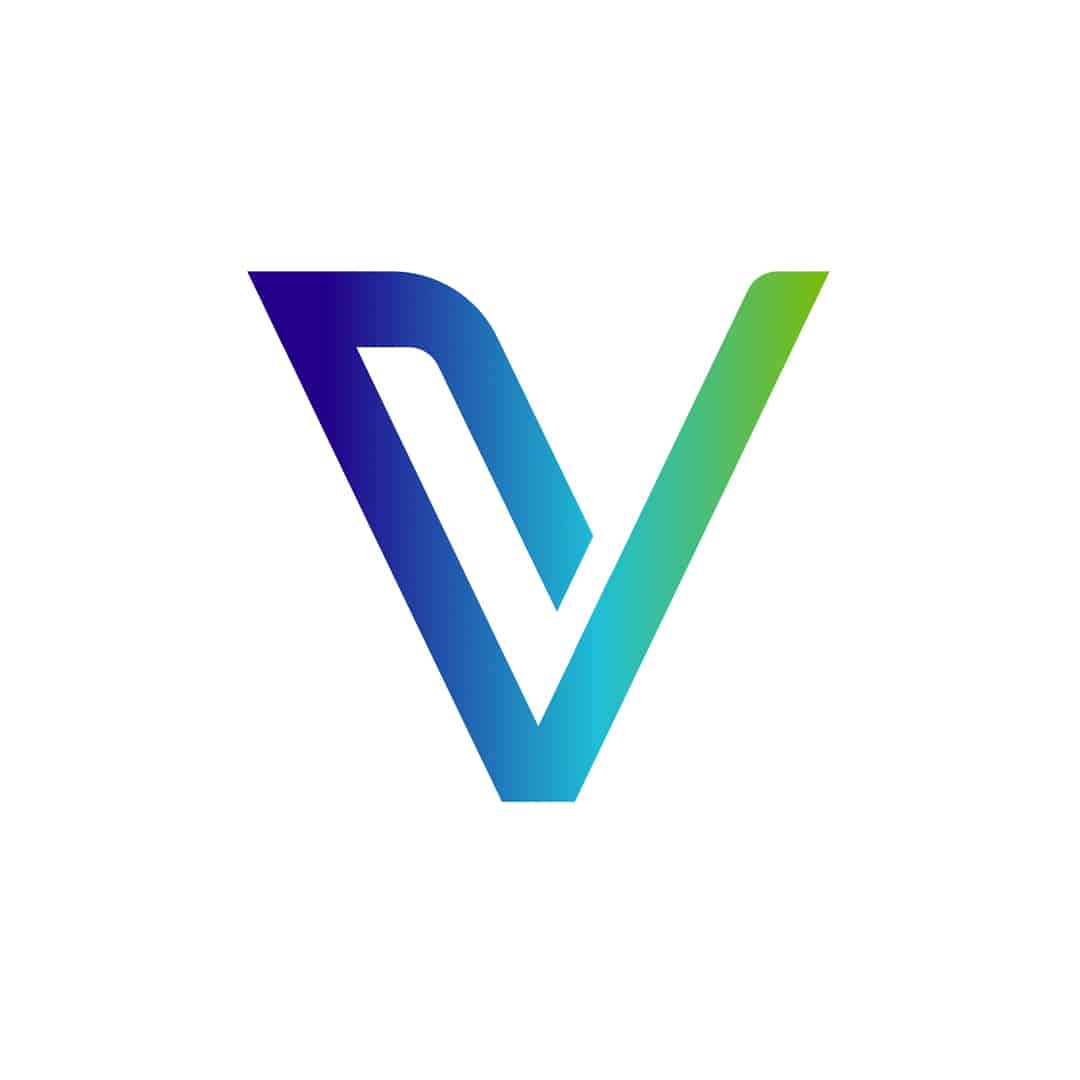
The purpose of VeChain is to make supply chain management and business processes more efficient. Started in 2015, VeChain relies on blockchain to increase the transparency and efficiency of logistics, healthcare, manufacturing, and similar sectors. The platform relies on VET for value transfer and VTHO to cover the cost of transactions. With VeChainThor, the chain makes it easy for enterprises to make use of contracts and dApps. Global companies such as Walmart China, BMW, and DNV have joined forces with VeChain to put blockchain into use. Tech in the blockchain helps to monitor production from their beginning to the end user, ensuring they are real and cutting down on fraud.
VeChain stands out since it uses less energy and is scalable, making it suitable for many large companies. Stakeholders are involved in the governance, and the process remains as simple as possible. With IoT devices connected to blockchain, VeChain helps connect the real and digital worlds. Already having a proven record and multiple real-life implementations, VeChain hopes to become the leading source of reliable data in many industries.
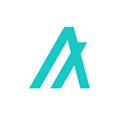
Algorand is a reliable, decentralized, a nd scalable platform for blockchain, created by cryptographer Silvio Micali. It was first launched in 2019 and is designed to achieve all three of the blockchain trilemma’s requirements at the same time. Pure Proof-of-Stake (PPoS) is the consensus algorithm used in Algorand, where the number of ALGO staked by each user determines which users are chosen as validators. The functions of ALGO include being used in transactions, locking up, and making decisions within the network. Since it allows for smart contracts and ASAs, Algorand is a great option for developing dApps and assets on the blockchain.
This network is popular because it allows low-cost transactions and can process more than 1,000 transactions per second. The platform is playing a major role in DeFi, CBDCs, intellectual property and tokenizing real estate. Several governments and organizations around the globe, including the Marshall Islands, have partnered with Ripple. By focusing on sustainability, Algorand has become the first carbon-negative blockchain. Thanks to this combination, Ethereum is considered an essential entity in the world of blockchain.
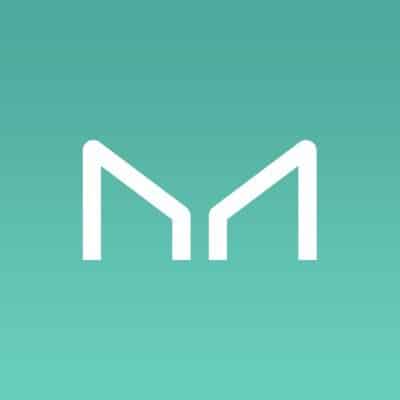
MakerDAO and Maker Protocol use Maker as their governance token in the decentralized finance (DeFi) space. Maker, which started in 2017 on the Ethereum platform, lets users create the DAI stablecoin by putting collateral in smart contracts.DAI is a crypto-backed stablecoin and, as a stablecoin soft-tied to USD, is frequently employed in DeFi. MKR holders have the power to determine the stability fees, approved debts, and the way risk is handled. Due to Maker’s process of over-collateralizing and liquidating assets, DAI always stays stable.
This system has no trusted part, and everything is clear, making users believe it will remain stable. Thanks to Maker, users can easily get loans without intermediaries. One of the main principles of Dei is included in hundreds of dApps and protocols. Should the system run out of collateral, MKR can be minted and exchanged to help restore proper levels of collateralization. The DeFi ecosystem depends on the Maker protocol because it emphasizes decentralization, strong finances, and transparency.
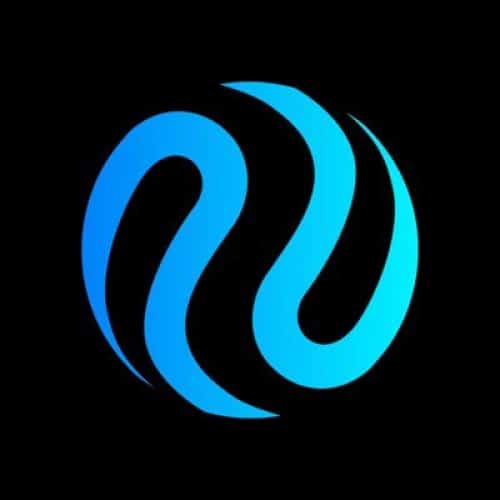
Injective is a blockchain designed to suit activities such as trading, derivatives, and DeFi without relying on other chains. The Tendermint consensus engine ensures that Injective is interoperable, handles a high volume of transactions, and provides instant confirmation. A notable feature is a DEX protocol that allows users to trade spot, perpetual, and futures markets, and this, along with other features listed below, is free of gas costs. You can stake, govern, pay fees, and take part in liquidity mining with INJ. Because orders are on the blockchain, trading at Injective is fast and efficient, like it would be in traditional market.
It is easy for developers to use the protocol to launch their decentralized financial apps that use any number of different chains. Since it connects to popular blockchains like Ethereum and Solana, it can be accessed by a wide range of users. Thanks to generous grants and other incentives, the Injective platform helps its ecosystem to grow swiftly. Investment from Binance and Pantera Capital is helping Injective build the foundation for future finance. In combining DeFi and financial market tools, Injective is setting itself apart in the fast-changing world of financial blockchains.
Quant is a platform that helps blockchain networks and other systems communicate using its product, Overledger. Quant is not set up like a typical blockchain, as its goal is to create an operating system for blockchain applications to interact and communicate with each other. In 2018, Gilbert Verdian introduced Quant to tackle the issue of interoperability in the blockchain industry. The QNT token is required to use the Overledger Network, such as for paying service costs, sending safe data, and supporting mApps.
Using Overledger, developers can develop apps that function across different blockchains, which is ideal for organizations that wish to have flexibility in how they use blockchain. Finance, healthcare, and supply chain industries are primary targets for quant, and it is compatible with ISO 20022, a standard vital for financial institutions to speak the same language. The main reason for this is the focus on businesses, which has resulted in more enterprises and programmers getting involved. Because blockchain is getting used more worldwide, Quant can act as a key part of the future of both centralized and decentralized systems.
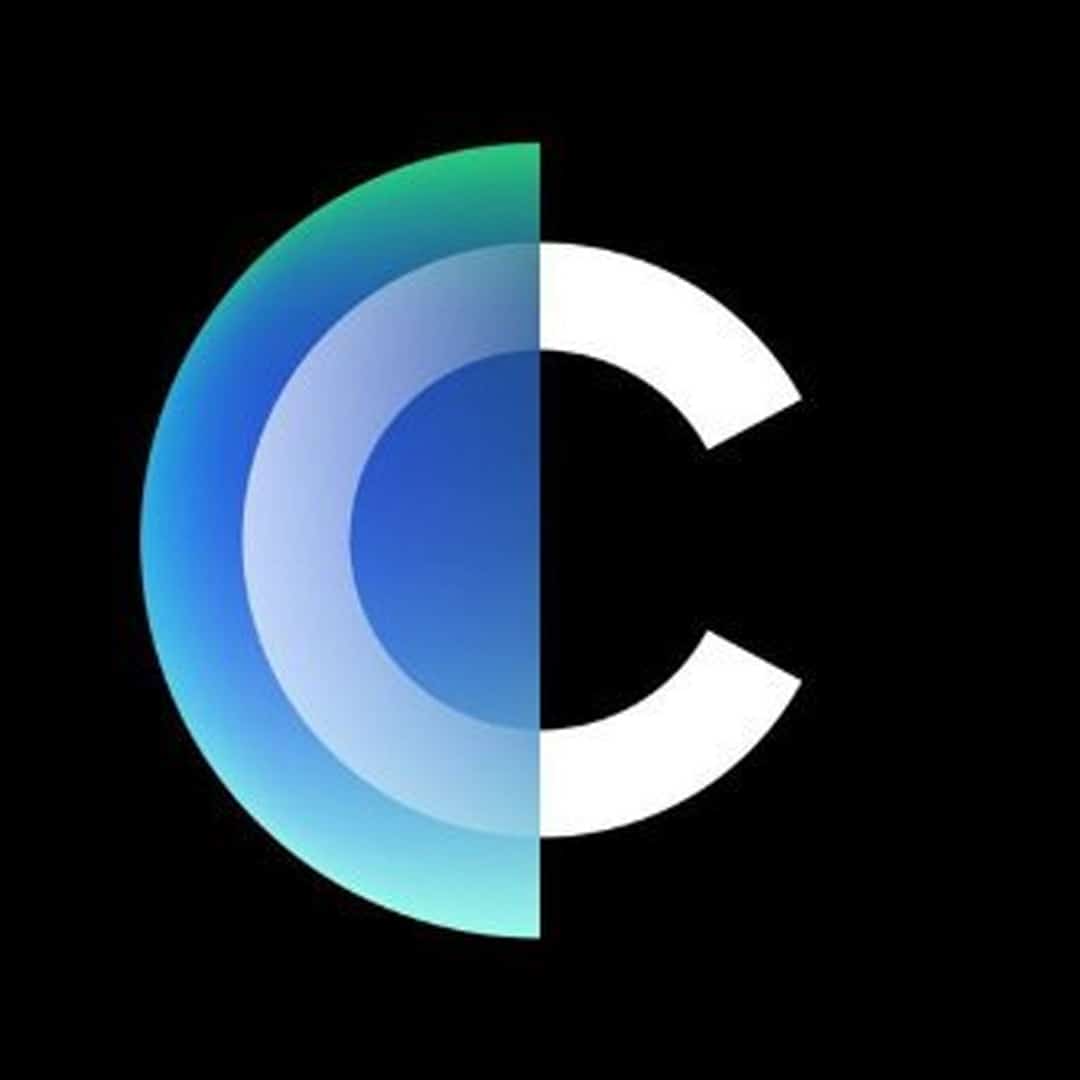
Clearpool describes itself as the first decentralized credit marketplace. Data from the platform claims that the platform has processed over $600 Million worth of loans in RWA tokens like stablecoins, treasury bills, and other cryptocurrencies. TVL on the platform is over $60 Million.
Clearpool connects borrowers to lenders through a multichain loan network. Lenders commit their assets to the credit vaults from which borrowers can obtain loans and pay a defined interest. APR for supported assets is up to 20% APR.
Clearpool features several credit facilities, including the Clearpool Prime – an Institutional grade DeFi KYC & AML compliant global network for wholesale borrowing and lending of digital assets and the Clearpool treasury pool (T-pool).
RWA tokens are innovative financial products that are representations of tangible entities on the blockchain. They are issued against a physical asset like stocks, bonds, fine art and real estate asset usually in the custody of the issuing firm. RWAs attempt to digitize some known assets using smart contracts, including real estate and fiat currencies. They leverage blockchain networks and tokenization technology as tools to create a more flexible version of these items.
As tokens on the blockchain, investors can easily own and manage these assets, relative to how it is done in traditional finance. The market cap of RWA assets has grown into a strong narrative in the crypto space with interest in this sector expanding across mainstream setups.
One of the main goals of RWA tokens is to create a connection between traditional finance, blockchain technology, and Decentralized finance by using blockchain networks to solve key issues of Tradfi like ownership structure, wealth management, and also scale operations in these areas.
RWA tokens can be categorized according to the role they play in an RWA tokenization system and the class of real-world they are backed by. The different types include:
These native tokens of blockchain networks enable the development of RWA protocols and the native tokens of these projects themselves, like ONDO and Chromia. These tokens embody the financial structure of the RWA project itself and reflect investors’ interest in the project and the market perception of the progress made by the project.
These are tokens issued as a representation of real-world commodities like real estate properties, precious metals, fine art, stocks and other bulk assets. They reflect the value and ownership structure of these assets and are sometimes designed to allow for real-life cases like rental, dividend distribution, lease, and payment for each of these cases.
Financial instruments like fiat currencies, treasury bills, bonds, and shares can be tokenized on the blockchain. A popular way of realizing this is true is the burn-and-mint algorithm that enables issuing firms to create tokenized representations of these assets and manage the collateral in case of redemptions. These tokens are also designed to enable cases like a yield-bearing structure, lending, and interest payment. Examples include OUSG, BUILDL, and USDT.
Ondo, Vechain, and Chromia are some of the best RWA tokens to invest in for a diversified portfolio. Vechain brings a wealth of experience from several years of consistent development by a reputable team. Vechain network has partnered with several mainstream firms to enable them to use the blockchain system for data management and tokenization.
Ondo Finance is also a solid choice. The project (ONDO) has grown with its market capitalization a thriving ecosystem. With consistent growth in key metrics, the project and its token are set to be a force in the RWA space.
Additionally, we have Chromia as the network allows RWA projects to build transparent applications for the tokenization of real-world assets. Other projects to look out for include Dusk, Lisk, TrueFi, and Clearpool.
RWA projects and tokens are sought after due to the benefits they offer. Some of these advantages include:
RWA projects cut off the middleman in traditional finance operations. By turning real-world assets like precious metals and fine art into tokens on a blockchain network, they make it easier for anyone, anywhere to acquire these assets and enjoy the financial benefits they offer.
For instance, tokenized U.S. treasuries can be acquired by non-US citizens. The acquisition process is also as easy as purchasing a cryptocurrency on decentralized or centralized exchanges. this lowers the barrier to participating in diverse financial systems.
The best RWA coins open up the financial system by lowering the barrier to participation. By removing regional and demographical restrictions to acquiring and transacting on assets like stocks, RWA projects create larger liquidity pools for investors, which upscales the funding system and creates denser liquidity from the additional buyers who were previously blocked out by traditional financial systems.
Transacting the tokenized form of traditional assets is relatively cheaper as well, especially if these tokens are issued on a low-fee blockchain network. Transactions could cost only a fraction of the fees that are charged for regular mainstream operations involving the asset.
RWA tokens inherit the native transparency of the blockchain network. Tokenized assets on the blockchain can be monitored by anyone. This allows a clear insight into transactions by individuals and institutions as they relate to the asset. In this case, it also improves the security of such transactions and creates a more sincere financial system.
RWAs also make it easier to manage real-world assets. Tokenized assets allow a more flexible ownership system, investors can own split portions of an asset by purchasing a corresponding amount of digital tokens. Transfer of ownership is also as easy as a P2P transaction. This allows for a more exciting financial interaction using Real-world assets.
Tokenized assets are flexible, they allow transfers across geographic regions. Anyone on the blockchain can buy, sell, and transfer these assets to a peer. As an enterprise-grade solution, RWA tokens broaden the operational scope of mainstream and native crypto financial institutions. Investors and custodial institutions can explore new possibilities using RWA tokenization technologies.
As interest in RWA tokens and projects grows, a few risks could limit the growth of this sector, these limitations include,
RWAs are issued against high value assets, they are therefore subject to the regulations in these areas. This adds an additional layer of relationship with the traditional financial system and the associated regulatory bodies. RWA projects must adjust their operations to the regulatory specification of the asset.
Where this is not properly done, investors stand a chance of running significant losses in case of a regulatory clamp-down. Due to the structure of mainstream regulatory systems, it is even harder to adjust RWA projects to fit these laws.
Foul players can also lure investors into investing in scam tokens. Some instances are tokens issued against a non-existent real-world asset or tokens issued against the regulatory specifications. Holders of a real-world asset can also lose their investment due to mismanagement of commodities by the issuing firm.
RWA issuing firms are accountable for the assets in their custody, this applies to real estate, fine art and other financial instruments. RWA projects are required to create an efficient system to handle the collateral, redemption, and regular transaction of the tokenized asset.
While the blockchain itself is a handy tool, this goes beyond simply representing the asset on a decentralized network. Proper and on-demand accountability is required for every RWA.
The growth potential of RWAs is expanding the scope of blockchain technology and decentralized finance. It gives insight into what can be achieved using decentralized networks, as it concerns the traditional finance system. The growth in this sector is proof of widespread interest.
RWA cryptos are currently focused on popular commodities (like real estate) and Financial instruments (like treasuries and bonds) and have enjoyed significant success, this is likely to continue into the future. In addition, the scope of RWA projects could expand deeper into the traditional finance system and enable even more classes of traditional assets to be successfully tokenized on the blockchain network.
It is hard to predict how the accompanying tokens, especially the unpegged tokens will perform in response to this, however, if the RWA narrative and the project in this category continues to progress, we could also see a relative growth in the valuation of these projects and their native tokens.
RWA tokenization projects are plugging the gap between the traditional financial system and decentralized finance. In the course of this article, we have reviewed some notable projects developing these solutions and how they work. RWA as a narrative is gaining traction, as retail investors investing in these projects at their early stage could boost your return on investment.
The best Real World Asset tokens hope to utilize the trend and the solutions they offer to build sustainable economies and grow the value of their associated tokens. Regardless, it is always advised to perform proper research on RWA tokenization projects you are looking to invest in and base your investments on your personal convictions. While investment opportunities are abundant, adjust your investments according to your risk tolerance level and other factors that apply to you.
BlackRock issues BUIDL (BlackRock USD Institutional Digital Liquidity Fund) – an RWA token backed by U.S. treasuries with a TVL of over $500 Million.
RWA tokens can be purchased on centralized and decentralized exchanges. reputable tokens are listed on top-tier cryptocurrency exchanges and you can purchase them by creating a trading account on the exchanges they are listed on. You can also purchase RWA tokens on decentralized exchanges like Uniswap, Raydium, and PancakeSwap.
RWAs represent a tangible item. Most of them are pegged to the value of the commodity or financial instrument they are backed by. The value of RWA tokens like OUSG reflects the value of the real-life asset they are issued against. On the other hand, other cryptocurrencies’ value are dependent on the progress of the project. Their values fluctuate freely as they are not pegged.